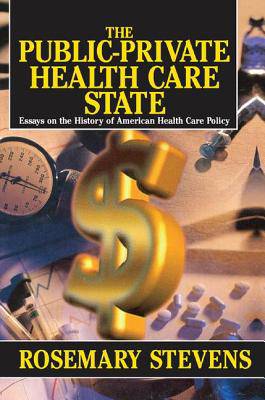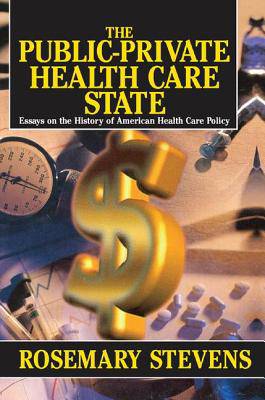
- Afhalen na 1 uur in een winkel met voorraad
- Gratis thuislevering in België vanaf € 30
- Ruim aanbod met 7 miljoen producten
- Afhalen na 1 uur in een winkel met voorraad
- Gratis thuislevering in België vanaf € 30
- Ruim aanbod met 7 miljoen producten
Zoeken
The Public-Private Health Care State
Essays on the History of American Health Care Policy
Rosemary A Stevens
Paperback | Engels
€ 75,95
+ 151 punten
Omschrijving
The distinctive mixing and continuous remixing of public and private roles is a defining feature of health care in the United States. The Public-Private Health Care State explores the interweaving of public and private enterprise in health care in the United States as a basis for thinking about health care in terms of its history and its continuing evolution today. Historian and policy analyst Rosemary Stevens has selected and edited seventeen essays from both her published and unpublished work to illustrate continuing themes, such as: the flexible meanings of the terms "public" and "private," and how useful their ambiguity has been and is; the role of ideology as ratifying rather than preordaining change; and the common behavior of public leaders and corporate entities in the face of fiscal opportunity. The topics--covering the period of 1870 through the twenty-first century--represent Stevens' research interests in hospital history and policy, the medical profession, government policy, and paying for health care. The volume also considers her involvement with policy questions, which include health services research, health maintenance organizations, and physician workforce policy. Section I demonstrates the long history of state government involvement with private not-for-profit hospitals from the 1870s through the 1930s. Section II examines the federal role in health care from the 1920s through the 1970s, including the establishment of veterans' hospitals and the implementation of Medicaid. Section III shows how shifting governmental roles require constantly changing organizing rhetoric, whether for inventing a federal role for health services research and HMOs, "regionalization" in the 1970s, or defining civil rights and "equity" as mobilizing vehicles in the 1980s. Section IV examines growing concerns from the 1970s through the present about the traditional "public" role of the largely "private" medical profession. Section V returns to the ambiguous public-private status of not-for profit hospitals, buffeted in the 1980s and 1990s by assumptions about the efficiency of the market.
Specificaties
Betrokkenen
- Auteur(s):
- Uitgeverij:
Inhoud
- Aantal bladzijden:
- 380
- Taal:
- Engels
Eigenschappen
- Productcode (EAN):
- 9781138516816
- Verschijningsdatum:
- 12/10/2017
- Uitvoering:
- Paperback
- Formaat:
- Trade paperback (VS)
- Afmetingen:
- 152 mm x 229 mm
- Gewicht:
- 452 g

Alleen bij Standaard Boekhandel
+ 151 punten op je klantenkaart van Standaard Boekhandel
Beoordelingen
We publiceren alleen reviews die voldoen aan de voorwaarden voor reviews. Bekijk onze voorwaarden voor reviews.











